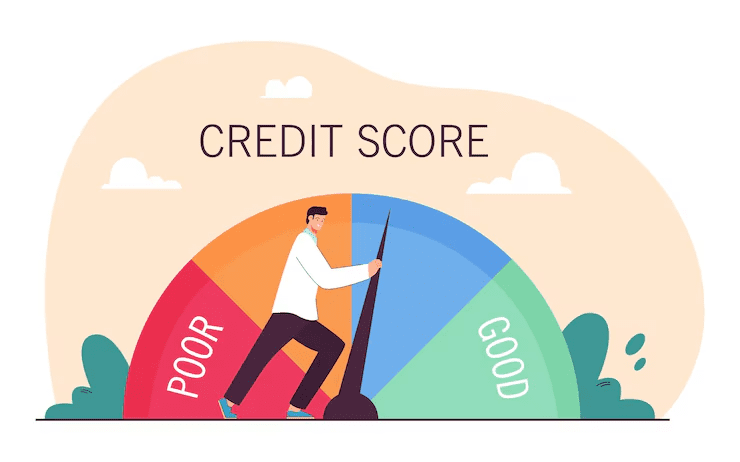
HDFC Credila Education Loan Login:
Accessing the HDFC Credila education loan login page is straightforward and convenient for students seeking financial assistance for their studies. By visiting the official HDFC Credila website, users can easily log in to manage their loan accounts, check their application status, and access essential documents. This process allows students to stay informed about their loans and ensures they can make timely payments.
For those unfamiliar with the login process, navigating the website may seem daunting at first. However, once they have their credentials ready, they will find the login interface user-friendly and efficient, simplifying loan management. Students can benefit from various features available after logging in, enabling them to focus on their educational journey without unnecessary financial stress.
Understanding the login process is vital for leveraging the full range of services offered by HDFC Credila. Users will discover that maintaining their account and communicating with the lender becomes much easier through the online portal. With a few clicks, they can take charge of their education loan experience.
Understanding HDFC Credila Education Loan

HDFC Credila provides education loans to students pursuing higher education in India and abroad. This segment will cover the key aspects of HDFC Credila, including its overview, the application process, and the features of the education loan.
Overview of HDFC Credila
HDFC Credila, a subsidiary of HDFC Ltd., specializes in education loans. It aims to facilitate students’ educational aspirations by providing financial assistance tailored to their needs.
The loan can be used for tuition fees, accommodation, and other student-related expenses. One notable aspect is that HDFC Credila offers flexibility in terms of repayment, allowing students to pay back after they complete their education. With a user-friendly interface and access to online services, students can easily manage their loans and monitor their application status.
The Application Process
Applying for an HDFC Credila education loan involves several straightforward steps.
- Online Registration: The first step is to visit the HDFC Credila website and register an account. This allows applicants to access the online application form.
- Fill in the Application Form: Applicants need to provide personal details, educational background, and loan requirements.
- Documentation: Essential documents include identification proof, income statements of co-applicants, and admission letters from educational institutions.
- Verification: After submission, HDFC Credila verifies the details provided before initiating the sanction process.
- Loan Approval: Once verified, the loan is sanctioned, and funds are disbursed as per the expenses incurred during education.
Throughout this process, applicants can log in to their account to check the status of their application.
HDFC Credila Education Loan Features
HDFC Credila education loans come with several valuable features designed to support students.
- Loan Amount: It offers loans varying from ₹1 lakh to ₹75 lakhs, depending on the course and institution.
- Repayment Flexibility: Borrowers can choose to start repayment six months after course completion or after securing a job.
- Interest Rates: Competitive interest rates are provided, with options for floating and fixed rates.
- No Collateral: Many loans do not require collateral for amounts up to ₹7.5 lakh.
- Tax Benefits: Education loan borrowers can claim tax deductions under Section 80E of the Income Tax Act.
These features make HDFC Credila a popular choice for students seeking educational financing options.
Eligibility and Documentation
To secure an HDFC Credila education loan, borrowers must meet specific eligibility criteria and provide certain documentation. Understanding these requirements is crucial for a seamless loan application process.
Eligibility Criteria for Borrowers
Borrowers seeking an HDFC Credila education loan must meet several eligibility conditions, which typically include:
- Age: They must be between 18 to 35 years.
- Citizenship: Only Indian nationals are eligible.
- Course Type: They should be enrolled or admitted to a recognized course, such as undergraduate or postgraduate programs.
- Academic Performance: A good academic record can strengthen the application.
- Co-applicant Requirement: A co-applicant, usually a parent or guardian, is often necessary.
These factors are crucial for determining the borrower’s suitability for the loan.
Required Documentation
To proceed with the application, borrowers must prepare the following documentation:
- Identity Proof: Valid government ID such as Aadhaar, Passport, or Voter ID.
- Address Proof: Utility bill, rental agreement, or bank statement.
- Income Proof: Salary slips or income tax returns of co-applicant.
- Admission Confirmation: Letter from the educational institution confirming admission.
- Sanction Letter: If applicable, documentation from any other existing education loans.
Providing accurate documentation helps expedite the loan approval process significantly.
Loan Terms and Interest Rates

Understanding the specifics of loan terms and interest rates is essential for individuals considering an HDFC Credila education loan. Key factors include the structure of interest rates, repayment timelines, and any applicable moratorium periods.
Understanding Interest Rates
HDFC Credila offers competitive interest rates on education loans, typically ranging from 10.5% to 12.5%. This rate may vary based on factors such as the applicant’s credit score and the chosen tenure.
Unlike some cooperative banks or Gramin banks, which may have varying rates influenced by local policies, HDFC’s rates are consistent. Moreover, a CIBIL score from SBI may affect overall financing options, but borrowers with strong credit histories can secure favorable terms.
Repayment Terms and Moratorium Period
Repayment for HDFC Credila loans generally begins after a moratorium period of 6 to 12 months post-course completion. During this time, interest may accrue, which could influence the total payout.
Loans usually have terms that vary from 5 to 15 years, allowing flexible payment options. Borrowers can select monthly installments that align with their financial capabilities.
It’s important to assess how these terms compare to other banks, like the SBI, which may offer different features, such as no fees for CIBIL score checks. Understanding these details can help in making informed financial decisions.
Credit Worthiness and Impact

Credit worthiness plays a vital role in securing an HDFC Credila education loan. Understanding what constitutes a good credit score and how it influences loan approval can benefit potential borrowers.
What is a Good Credit Score
A good credit score typically ranges from 700 to 850. Scores in this category indicate responsible credit behavior. Lenders view such scores as favorable, leading to better loan terms, including lower interest rates.
For educational loans, a score above 750 is often considered excellent. Below 600 could be categorized as poor, making it significantly more challenging to secure favorable loan conditions. Assessing credit scores can help applicants gauge the likelihood of approval and the potential for more manageable repayment options.
Improving Your Credit Score
Improving a credit score requires consistent effort and sound financial practices. Some effective strategies include:
- Pay Bills On Time: Late payments can severely impact credit scores.
- Limit Credit Utilization: Keeping credit card balances below 30% of the limit is advisable.
- Avoid New Credit Lines: Frequent applications for credit can lower a score temporarily.
Borrowers can raise their credit scores through methods like monitoring their credit reports for errors and ensuring that all accounts remain active. Implementing these strategies can lead to a more favorable financial standing over time.
Loan Impact on Credit Score
Taking out an education loan can have a dual effect on credit scores. Initially, applying for a loan can result in a hard inquiry, which may lower the score temporarily. This impact usually lasts for a few months.
Once the loan is approved and repayments begin, timely payments can help improve the borrower’s credit score. Conversely, missed payments can cause significant damage. Maintaining a positive repayment history is crucial, as it shows lenders reliability, potentially benefiting future loan applications.
Alternative Financing Options

Individuals seeking educational funding beyond HDFC Credila can explore various alternative financing options. These options include government-backed loan schemes, loans from non-banking financial companies (NBFCs), and potential scholarships and grants.
Government-Backed Loan Schemes
Government-backed loan schemes provide students with the opportunity to receive financial assistance with favorable terms. For instance, the Pradhan Mantri Awas Yojana – Urban (PMAY(U)) aims to support urban housing finance, offering loans with lower interest rates.
Other schemes may vary by state, targeting specific groups or educational fields. By accessing these programs, students can benefit from longer repayment periods and reduced interest rates, making education more affordable.
Non-Banking Financial Company (NBFC) Loans
NBFCs are a significant source of education financing. They often provide flexible eligibility criteria and quicker processing times compared to traditional banks.
Such loans typically cater to various educational needs, from undergraduate to postgraduate degrees. Specific NBFCs may offer tailored loans for fields like technology, management, or vocational training. Borrowers should compare interest rates and terms before committing, as these can differ widely among institutions.
Scholarships and Grants
Scholarships and grants are essential forms of financial aid that do not require repayment. Many organizations, educational institutions, and government bodies offer scholarships based on merit, need, or special talents.
Students can apply for various awards, such as the Annasaheb Patil Loan, which supports deserving candidates in higher education. Researching available options and understanding eligibility criteria are crucial for maximizing these opportunities.
In addition to government initiatives, private scholarships may exist for specific fields or demographics, enhancing educational access and affordability.
Managing Finances During Education
Navigating finances while pursuing education is crucial for students. Effective budgeting, seeking part-time work, and utilizing student credit facilities can help manage expenses and reduce financial stress.
Budgeting for Students
Creating a detailed budget is essential for students to manage their finances effectively. A budget should include fixed expenses such as tuition, rent, and utilities, as well as variable expenses like food and entertainment.
Students can use tools like spreadsheets or budgeting apps to track their spending. Setting a monthly spending limit and reviewing expenses regularly helps to stay within budget.
It’s also wise to factor in contingency funds for unexpected costs. By monitoring their budget, students can avoid accumulating debt and understand how to manage retained earnings effectively.
Part-Time Employment and Internships
Many students opt for part-time jobs or internships to support their finances. This not only provides extra income but also valuable work experience.
Job opportunities range from retail and food service to internships related to their field of study.
Students should consider positions that allow flexible hours to balance work and academic commitments. Additionally, these roles can lead to networking opportunities, which may benefit their future careers. Proper time management ensures that work does not detract from academic performance.
Student Credit Facilities
Student credit facilities can help manage financial needs, especially for those without a regular income. Personal loans for students with no job often have more lenient eligibility criteria.
Many banks and financial institutions offer student credit cards with lower limits, allowing them to build credit history.
Using these cards responsibly, such as making small purchases and paying off balances on time, can enhance credit scores. Some options allow a salary advance loan without a CIBIL check, providing quick access to funds during emergencies. Understanding these facilities ensures that students utilize credit wisely and avoid long-term debt.
Loan Repayment Strategies

Managing repayment effectively can ease the burden of education loans. Various strategies such as pre-payment benefits, loan consolidation, and refinancing options offer borrowers flexibility and financial relief.
Pre-Payment Benefits
Making pre-payments can significantly reduce the total interest paid over the loan tenure. By paying off the principal balance earlier than scheduled, borrowers can decrease their total repayment liability.
Many lenders, including HDFC Credila, allow pre-payments without hefty penalties. This option is particularly advantageous for those who experience an increase in income after graduation. An early payment reduces the outstanding principal, which subsequently lowers the accrued interest over time.
Another benefit includes the potential for a shorter loan term, leading to sooner financial independence. Borrowers should review their loan agreements to confirm any conditions linked to pre-payment.
Loan Consolidation Options
Loan consolidation can streamline multiple education loans into a single new loan, simplifying repayments. This approach can be beneficial for those managing various loans from lenders like SBI or others.
Consolidating loans may lead to a lower monthly payment by extending the repayment term. However, it can result in paying more interest over time. Borrowers should assess their financial situation to determine if consolidation aligns with their long-term goals.
Most importantly, potential borrowers should compare interest rates and terms from different lenders. This due diligence will help secure better consolidation terms, thus enhancing financial management.
Refinancing Your Education Loan
Refinancing offers another avenue for borrowers seeking lower interest rates or improved loan conditions. By transferring the education loan to another lender, borrowers might secure a more favorable rate.
This option is especially relevant when interest rates drop significantly or when personal credit improves. Before refinancing, it is crucial to evaluate fees associated with the process and any impact on the loan’s terms.
Borrowers should compare various refinancing options, keeping in mind the upsides and drawbacks. Lenders like SBI may provide competitive offers, making it essential to research thoroughly to make an informed decision.
Investment Considerations for Loan Applicants
Loan applicants should assess various investment opportunities to maximize their financial standing. The decisions made now can significantly influence their repayment capabilities and future financial health. Key areas include considering physical assets like gold and government-backed savings options.
Gold as an Investment
Gold is often viewed as a secure investment due to its intrinsic value. Many people invest in gold to hedge against inflation and market volatility. It is essential for applicants to evaluate how gold can serve as a liquidity option.
Investors can consider options such as Chemmanur Gold Loan, which allows customers to leverage their gold holdings for funds. This loan can be beneficial during financial emergencies or when cash flow is tight.
The value of gold can fluctuate based on market demand and global economic conditions. Understanding these market dynamics is crucial. Researching trends in gold prices can help applicants make informed decisions about timing and quantity.
Understanding Savings Certificates
Savings certificates are fixed-income instruments provided by financial institutions, characterized by their low risk. A notable option is the Mahila Samman Savings Certificate, designed specifically for women. This investment offers attractive interest rates and promotes financial independence.
Applicants should explore how these certificates can supplement their financial portfolio. They usually have a defined maturity period, and interests earned are often guaranteed, contributing to predictable returns.
Furthermore, savings certificates assist in fostering discipline in savings. Regular investments can significantly build a financial cushion, aiding in loan repayment and securing future plans.
Additional Financial Products and Services
HDFC Credila offers various financial products and services designed to meet diverse needs beyond education loans. This section outlines alternative loan products and investment services available to customers.
Alternative Loan Products
HDFC Credila provides several alternative loan products to assist various financial situations. These include car loans, which help customers purchase vehicles. The car loan features flexible repayment options and competitive interest rates.
Additionally, partnerships with entities like JM Financial Home Loans Limited offer home financing solutions to potential homeowners. There’s also access to rapid loans, providing quick funding with minimal documentation for urgent financial needs.
For those seeking community-based financing, society loans might be an option. These can cater to specific groups, helping members access funds collectively. Moreover, BharatPe loan eligibility allows small business owners to tap into loans quickly through a seamless digital process.
Investment Services
HDFC Credila’s investment services focus on wealth creation and management tailored to individual goals. They offer products like mutual funds, fixed deposits, and systematic investment plans (SIPs), which help investors grow their savings over time.
With a dedicated team of financial advisors, customers receive personalized guidance on selecting investments that align with their risk appetite and financial objectives.
Regular market analysis and updated investment strategies ensure their clients are well-informed. This proactive approach enhances customer confidence in managing their portfolios efficiently.
